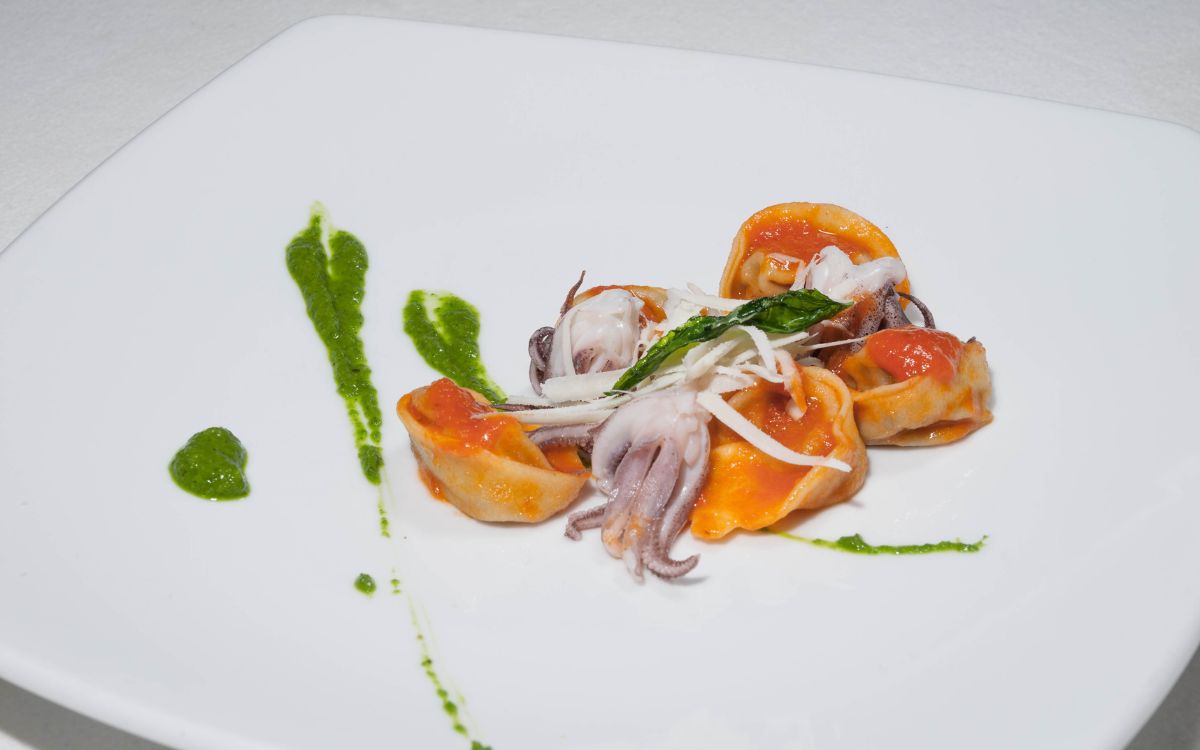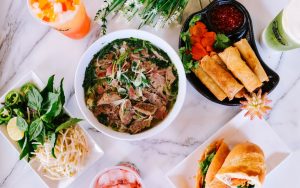When it comes to food, we often eat with our eyes first. The presentation of a dish can be just as important as its taste, captivating us before we even take the first bite. In the realm of culinary artistry, sauces and drizzles play a crucial role in enhancing the visual appeal of a dish. These delectable adornments not only add depth and complexity to flavors but also contribute to the overall aesthetic, turning a simple plate into a work of art.

From understanding their impact on flavor profiles to learning techniques for creating captivating designs, this blog post will guide you through the process of adding visual interest to your dishes.
Understanding the Power of Sauces and Drizzles
When it comes to culinary artistry, sauces and drizzles are the secret ingredients that have the power to transform a dish into a multisensory experience. These flavorful embellishments not only enhance the taste and texture of a meal but also play a vital role in adding visual interest to the plate. Let’s delve deeper into the world of sauces and drizzles and explore their remarkable influence on both flavor and presentation.
Enhancing Flavors and Textures
Sauces have the ability to take a dish from ordinary to extraordinary by intensifying and complementing its flavors. Whether it’s a rich and velvety béchamel sauce, a tangy citrus reduction, or a vibrant pesto, each sauce brings a unique taste profile that can enhance the underlying ingredients. They can add depth, complexity, and a harmonious balance to the overall taste experience.
Moreover, sauces have the power to elevate the textures of a dish. A silky smooth hollandaise sauce poured over eggs Benedict or a creamy mushroom sauce drizzled over a juicy steak can provide a luscious mouthfeel that enhances the eating experience. By carefully selecting and pairing sauces with the main components of a dish, you can create a symphony of flavors and textures that tantalize the taste buds.
Adding Depth and Complexity
Sauces and drizzles are not just about flavor enhancement; they also contribute to the visual appeal of a dish by adding depth and complexity. A beautifully crafted sauce can create layers and dimensions on the plate, transforming a simple arrangement of ingredients into an artful composition. Whether it’s a pool of glossy reduction or an elegantly swirled drizzle, these elements invite the eye to explore the dish further.
By incorporating various ingredients, such as herbs, spices, or aromatics, into the sauce or drizzle, you can introduce additional layers of flavor and complexity. This interplay of flavors adds intrigue and excitement to the overall dining experience, captivating both the taste buds and the visual senses.
Creating Patterns and Designs
Drizzles, in particular, offer a unique opportunity to create visually striking patterns and designs on the plate. A well-executed drizzle can be likened to an artist’s brushstroke, adding a touch of elegance and sophistication to the presentation. From simple zigzags to intricate swirls or concentric circles, the possibilities are endless when it comes to showcasing your creativity through drizzles.
The strategic placement of drizzles can draw attention to specific elements of the dish or guide the eye along a particular path. They can highlight the main ingredient, create a visual balance, or introduce a playful element to the composition. By mastering the art of drizzling, you can transform a dish into a visually captivating masterpiece that excites and entices the diner.
Choosing the Right Sauces and Drizzles
Selecting the perfect sauces and drizzles for your dishes requires a thoughtful approach that takes into account various factors such as flavor profiles, complementary ingredients, and color coordination. By understanding the art of pairing and balancing these elements, you can create harmonious culinary compositions that both please the palate and captivate the eye.
Harmonizing Flavor Profiles
When choosing sauces and drizzles, it’s crucial to consider the flavor profiles of both the main dish and the accompanying embellishments. Aim for a harmonious marriage of flavors where the sauce or drizzle complements and enhances the overall taste experience.
For example, a rich and creamy sauce might pair well with a succulent piece of roasted meat, while a light and tangy drizzle could beautifully balance a delicate seafood dish.
Experiment with different flavor combinations and take note of how they interact with the main ingredients. Consider the intensity of the flavors, the level of acidity or sweetness, and the overall balance you wish to achieve. By striking the right balance, you can create a cohesive and memorable flavor profile that will delight your taste buds.
Complementary Ingredients
In addition to harmonizing flavor profiles, it’s essential to consider the complementary ingredients that will accompany the sauce or drizzle. Take into account the textures, colors, and aromas of the dish as a whole. Look for ingredients that enhance and highlight the main components, creating a cohesive and visually appealing presentation.
For instance, if you have a dish with earthy roasted vegetables, you might opt for a herb-infused sauce that brings freshness and vibrancy to the plate. Or if you have a seafood dish with a delicate flavor, a citrus-based drizzle could provide a refreshing contrast. The key is to select ingredients that work together in harmony, enhancing the overall dining experience.
Coordinating Colors for Visual Appeal
Color coordination plays a significant role in creating visually stunning dishes. Consider the color palette of both the main ingredients and the sauces or drizzles you plan to use. Aim for complementary or contrasting colors that add visual interest and create a harmonious balance on the plate.
For example, a vibrant green pesto sauce can provide a striking contrast against the pale hues of a seared white fish, while a deep red berry reduction can add a pop of color to a dessert presentation.
Think about how the colors will interact and how they can enhance the overall visual appeal of the dish. Don’t be afraid to experiment with different combinations to find the most visually pleasing arrangement.
Techniques for Styling Sauces and Drizzles
Mastering the art of styling sauces and drizzles requires precision and creativity. In this section, we will explore various techniques that will help you achieve visually stunning presentations that are sure to impress your guests. From controlled application with squeeze bottles to the use of stencils for intricate designs, these techniques will elevate your plating skills to new heights.
Using Squeeze Bottles for Precise Application
Squeeze bottles are a versatile tool that allows for precise control when applying sauces and drizzles. Choose bottles with different nozzle sizes to achieve variations in the thickness of the lines or shapes you create. This level of control is especially useful when you want to create clean and defined patterns on the plate.
Practice controlling the flow of the sauce or drizzle by adjusting the pressure you apply to the bottle. Experiment with different techniques, such as starting with a slow and steady hand movement or applying more pressure for bolder lines. The squeeze bottle technique provides you with the freedom to unleash your creativity and create unique designs that enhance the overall visual appeal of the dish.
Employing Squeeze Bottles with Stencils
Take your plating skills to the next level by incorporating stencils into your sauce and drizzle designs. Stencils are a fantastic tool for adding intricate patterns and designs to your dishes, even if you don’t possess advanced artistic skills. Simply place the stencil on the plate and use the squeeze bottle to carefully fill in the designated areas.
Experiment with different stencil designs, ranging from geometric shapes to nature-inspired motifs. You can create symmetrical patterns, asymmetrical arrangements, or even layer multiple stencils for added complexity. Stencils offer a fantastic way to elevate your plating game and add a touch of artistry to your culinary creations.
Playing with Heights and Angles
Another technique to consider when styling sauces and drizzles is playing with the heights and angles at which you apply them. Varying the distance between the plate and the squeeze bottle can create different effects. For instance, holding the bottle closer to the plate will result in thicker lines, while holding it higher will create thinner, more delicate lines.
Additionally, experiment with the angle at which you hold the squeeze bottle. Tilting it at a slight angle can create a dynamic and visually engaging effect. Combine different heights and angles to achieve a sense of movement and fluidity on the plate. This technique adds a level of artistic expression to your plating and enhances the overall visual interest of the dish.
Incorporating Negative Space
Negative space, the empty or blank areas on the plate, is an essential element in plating and styling sauces and drizzles. Consider the overall composition and balance between the sauce or drizzle and the other components of the dish. Leave enough negative space to create a sense of visual clarity and allow the sauce or drizzle to shine as a focal point.
Negative space provides breathing room for the eyes and allows the diner to appreciate the intricate details of your sauce or drizzle design. Experiment with different placement options, utilizing negative space to guide the viewer’s gaze and create a harmonious arrangement on the plate. Striking the right balance between the elements and negative space will result in a visually stunning presentation.
Artful Plating with Sauces and Drizzles
Plating is an art form that allows you to transform your culinary creations into visually stunning masterpieces. In this section, we will explore various techniques and designs for artful plating with sauces and drizzles. From classic circular drizzles to dynamic zigzag patterns and eye-catching spiral drizzles, these techniques will help you create captivating presentations that will delight both the eyes and the taste buds.
Classic Circular Drizzles
One of the most common and visually pleasing techniques for plating with sauces and drizzles is the classic circular drizzle. This technique involves creating concentric circles of sauce or drizzle on the plate, with each circle slightly overlapping the previous one. The result is an elegant and symmetrical design that draws the eye to the center of the plate.
To achieve this technique, use a squeeze bottle with a narrow nozzle. Start from the center of the plate and slowly move the bottle in a circular motion, gradually increasing the size of the circles as you move outward. The circular drizzles add a touch of sophistication and create a sense of balance on the plate.
Dynamic Zigzag Patterns
For a more dynamic and visually intriguing presentation, consider using zigzag patterns with your sauces and drizzles. Zigzag lines create movement and energy on the plate, adding a sense of excitement to the overall composition. This technique works particularly well when you want to create a modern and playful plating style.
To create zigzag patterns, hold the squeeze bottle at a slight angle and move your hand back and forth in a steady motion. Start from one side of the plate and continue until you reach the other side, overlapping the lines slightly. The zigzag patterns can be bold and pronounced or delicate and subtle, depending on the desired effect.
Eye-Catching Spiral Drizzles
Spiral drizzles offer a visually striking and captivating presentation that instantly grabs attention. This technique involves creating swirling patterns on the plate, resembling the shape of a spiral. The spirals can be tight and compact or loose and flowing, depending on the desired visual impact.
To create spiral drizzles, start from the center of the plate and slowly rotate your hand in a circular motion while moving outward. Maintain a consistent speed and pressure to achieve a smooth and continuous spiral. This technique adds a sense of movement and elegance to the plating, creating a focal point that draws the eye.
Balancing Negative Space and Components
In artful plating, the concept of negative space plays a crucial role in creating a visually appealing composition. When styling sauces and drizzles, consider how negative space interacts with the other components on the plate. Leave enough empty space to create a sense of balance and harmony, allowing the sauce or drizzle to shine as a focal point.
Strategically place the sauce or drizzle on the plate, utilizing negative space to guide the viewer’s gaze and create a visually pleasing arrangement. Consider the placement of other elements such as proteins, vegetables, or garnishes to achieve a well-balanced composition.
By striking the right balance between the elements and negative space, you can create a visually stunning presentation that is as aesthetically pleasing as it is delicious.
Elevating the Dining Experience with Sauces and Drizzles
Sauces and drizzles have the remarkable ability to elevate the dining experience by perfectly complementing different types of dishes. In this final section, we will explore how these flavorful embellishments can add depth, complexity, and visual interest to a wide range of culinary creations. From appetizers to main courses and desserts, sauces and drizzles have the power to take your meals from ordinary to extraordinary.
Enhancing Appetizers and Starters
Appetizers and starters set the tone for the meal, and sauces and drizzles can play a crucial role in enhancing their flavor and presentation. A creamy garlic aioli can elevate a plate of crispy vegetable fritters, while a zesty citrus vinaigrette can bring brightness to a refreshing salad.
These sauces and drizzles provide a burst of flavor and add visual appeal, enticing the taste buds and preparing them for the main course.
Elevating Main Courses
Main courses are the centerpiece of any dining experience, and sauces and drizzles can take them to new heights. A rich red wine reduction can beautifully complement a perfectly cooked steak, while a velvety beurre blanc can add a luxurious touch to a piece of roasted fish.
These sauces bring depth, complexity, and balance to the dish, enhancing the flavors of the main ingredients and creating a memorable culinary experience.
Enchanting Vegetarian and Plant-Based Dishes
Sauces and drizzles play an essential role in enhancing the flavors of vegetarian and plant-based dishes. A vibrant chimichurri sauce can elevate grilled vegetables, while a creamy cashew-based dressing can bring richness to a nourishing grain bowl.
These sauces and drizzles provide a burst of flavor that enhances the natural goodness of plant-based ingredients, making them a delight for both vegetarians and meat-eaters alike.
Delighting Desserts
Sauces and drizzles are not limited to savory dishes; they can also work wonders in the realm of desserts. A silky chocolate ganache can be poured over a decadent cake, while a tangy berry coulis can be drizzled over a creamy cheesecake.
These sweet sauces and drizzles add an extra layer of indulgence and visual appeal to desserts, creating a delightful symphony of flavors and textures.
Catering to Dietary Preferences and Restrictions
One of the great advantages of sauces and drizzles is their versatility in catering to different dietary preferences and restrictions. Whether your guests follow a gluten-free, dairy-free, or vegan lifestyle, you can create sauces and drizzles that accommodate their needs without compromising on flavor.
By utilizing alternative ingredients and creative flavor combinations, you can ensure that everyone can enjoy a memorable dining experience.
Conclusion
The transformative power of sauces and drizzles in elevating dish presentation is undeniable. By paying attention to the visual appeal of your creations, you can create a dining experience that is as visually stunning as it is delicious.
Through the exploration of flavor profiles, plating techniques, and unconventional presentations, you have the opportunity to unleash your creativity and take your culinary skills to new heights.









